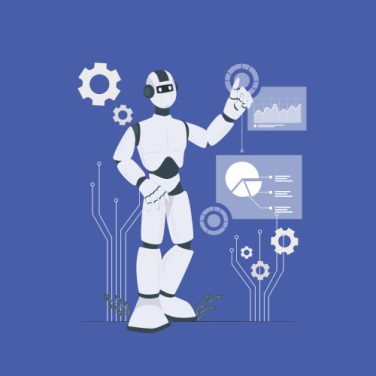Cloud-based HRIS software centralises human resources functions onto a web-accessible platform. It evolved from traditional HRIS installed on-premise—requiring dedicated servers and IT maintenance—to a SaaS delivery model managed by vendors.
Key characteristics include real-time data access, automated updates, and subscription-based pricing. Organisations leverage cloud HRIS to streamline payroll, talent management, compliance, and analytics without heavy infrastructure overhead.
Definition and key characteristics
- Multi-tenant SaaS architecture
- Employee self-service portals
- Integrated payroll and talent modules
- Browser and mobile app access
Evolution from on-premise to cloud
- On-premise: high CapEx, manual upgrades, long deployments
- Cloud: OpEx model, automatic updates, rapid rollout
- Continuous innovation with AI insights
TL;DR: Key takeaways
- Cloud HRIS eliminates on-premise hardware overhead and improves scalability across locations.
- Core modules include global payroll, talent management, analytics dashboards, and self-service tools.
- Security standards, API-driven integrations, and AI-powered insights differentiate top solutions.
- Adoption success relies on clear evaluation criteria, best-practice implementation, and change management.
Key benefits of moving HRIS to the cloud
- Scalability: Adjust user counts instantly without hardware upgrades.
- Accessibility: Secure 24/7 access via browser or mobile worldwide.
- Cost Savings: Predictable SaaS fees reduce IT overhead.
- Agility: Rapid feature releases keep compliance current.
- Collaboration: Centralised data unifies HR, finance, and managers.
Cloud HRIS vs. on-premise HRIS: A comparative analysis
| Aspect | Cloud HRIS | On-Premise HRIS |
|---|---|---|
| Deployment Time | Weeks | Months |
| Upfront Costs | OpEx (subscription) | CapEx (hardware, licenses) |
| Maintenance | Vendor-managed updates | In-house IT support |
| Customisation | API-first integrations | Limited by legacy code |
| Security & Compliance | Built-in certifications | Manual audits |
Core features every cloud HRIS should include
- Payroll Management Module: Supports multi-currency payroll, tax calculations, and compliance with local labour laws.
- Talent Acquisition & Onboarding: Applicant tracking, digital onboarding workflows, offer letters, and new-hire portals.
- Self-Service & Mobile Access: Employee self-service for leave, attendance, payslips, accessible via mobile app.
- Analytics & Reporting: Real-time HR dashboards, custom reports, workforce trends, and predictive insights.
- Workflow Automation: SmartAssist routes HR requests, approvals, and tasks based on configured triggers.
Security and compliance in cloud HRIS
- Data encryption at rest and in transit (AES-256, TLS).
- Role-based access controls and multi-factor authentication.
- Automated compliance updates for GDPR, SOC 2, ISO standards.
- Comprehensive audit trails and reporting capabilities.
- Disaster recovery and business continuity planning with regular backups.
Integration capabilities: Connecting with enterprise systems
- Open APIs for ERP, CRM, finance, and benefits platforms.
- Pre-built connectors for time-tracking and learning management systems.
- Single sign-on (SSO) and identity management via SAML, OAuth.
- Real-time data synchronisation for unified reporting.
- Custom SmartAssist workflows to integrate bespoke applications.
Best practices for implementing cloud HRIS successfully
- Establish project governance and a cross-functional steering committee.
- Conduct requirements mapping before evaluating vendors.
- Pilot with representative users and iterate based on feedback.
- Invest in change management and comprehensive user training programs.
- Track adoption metrics and continuously refine processes.
Cost models and return on investment for cloud HRIS
- Subscription pricing: user-based, module-based, or tiered plans.
- Implementation services: one-time setup fees vs bundled packages.
- Hidden costs: data migration, integrations, customisation.
- ROI drivers: reduced manual errors, IT cost savings, faster payroll cycles.
- Benchmark: average payback within 6–12 months through efficiency gains.
Role of AI and advanced analytics in cloud HRIS
- Predictive analytics flags turnover risks and absenteeism patterns.
- MiA: AI assistant that delivers instant HR insights on demand.
- SmartAssist automates task routing based on historical workflows.
- Data clustering visualises leave patterns and segments workforces.
- Strategic dashboards forecast hiring needs and resource planning.
Use cases across business sizes and industries
- Small businesses (up to 250 employees): MiHCM Lite simplifies HR operations.
- Enterprises: MiHCM Enterprise handles global payroll, multi-currency, compliance.
- Nonprofits & education: cost-effective workforce management and reporting.
- Healthcare & manufacturing: shift scheduling with GPS geofencing.
- Remote-first companies: mobile attendance tracking and virtual onboarding.
Emerging trends in cloud HRIS
- Employee well-being and mental health modules integrated within HRIS.
- Mobile-first HR experiences to support hybrid workforce models.
- Deeper AI for continuous performance management automation.
- DEI analytics to measure diversity, equity, and inclusion metrics.
- Shift from attendance tracking to outcome-driven productivity insights.
Criteria for evaluating and selecting cloud HRIS software
- Feature completeness: payroll, talent, analytics, self-service.
- Security certifications: GDPR, SOC 2, ISO compliance roadmap.
- Integration readiness: API ecosystem and pre-built connectors.
- Workflow flexibility: custom processes and branding.
- Total cost of ownership: transparent pricing structure.
- Vendor support: training, documentation, and community resources.
Cloud-based HRIS software transforms HR operations with scalable infrastructure, enterprise-grade security, and AI-driven insights. Success depends on careful evaluation, structured implementation, and ongoing optimisation.
MiHCM’s suite offers tailored solutions—from MiHCM Lite for small teams to MiHCM Enterprise AI for global organisations—ensuring streamlined processes and maximum ROI.
Embracing cloud HRIS future-proofs HR, supports workforce agility, and drives business outcomes.



